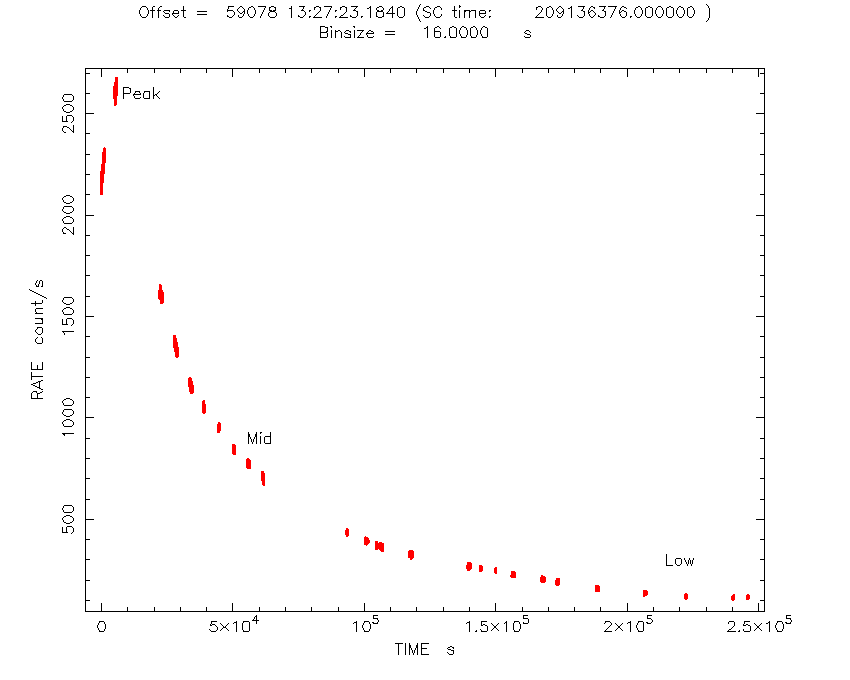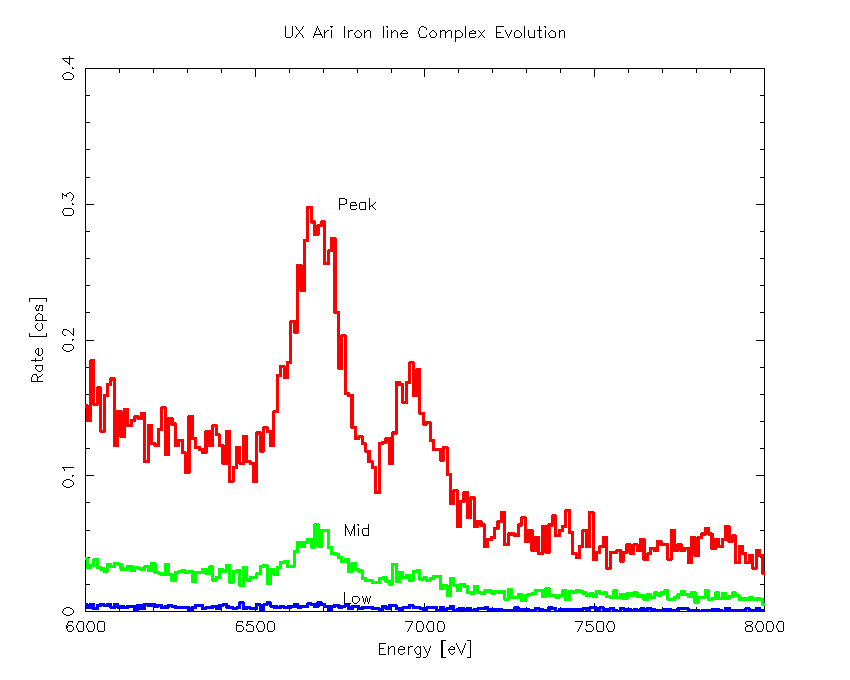NICER / ISS Science Nugget
for August 20, 2020
The Rising
On 17 August 2020, at 8:05 AM Eastern time, JAXA's MAXI experiment on ISS detected a flare from the star UX Ari. Within 10 minutes, the MAXI team in Tokyo reported this detection to the NICER team, and requested a prompt NICER observation of the star to assess the physical conditions behind the flare. NICER picked up the target on the next orbit, at 13:25 UT (1 h 20 m after the initial MAXI detection) and found the flare to be rising in intensity. The speed of the follow-up allowed NICER to measure the plasma properties in the flare during the rapid flare rise time, a short period of time that is rarely observed in X-rays.
NICER found that the plasma responsible for the UX Ari flare increased in temperature to about 100 million Kelvin (∼9 keV) near the peak of the X-ray emission. NICER's continued observations tracked the cooling of this hot gas as a function of time as the flare faded. Figure 1 shows NICER's measured "light curve", while Figure 2 shows the X-ray spectrum's evolution near the iron K line complex around 6.6 keV.
In the future, through the OHMAN (On-orbit Hookup of MAXI and NICER) effort, we expect to significantly shorten NICER's reaction time from > 1 hr to 5 minutes or less, to watch stellar flare evolution during the explosive rise more closely.

Figure 1: The NICER measured X-ray intensity of UX Ari as a function of time. Rapid followup by NICER of the MAXI trigger enabled us to capture the rise of the flare followed by its slow decline.

Figure 2: The X-ray spectrum of UX Ari, measured by NICER at three points in the flare evolution - at the peak, mid-way down, and at the lowest intensities - shows how significantly the iron K line spectrum evolves as the flare plasma cools.
<< Previous
Main Index
Next >>